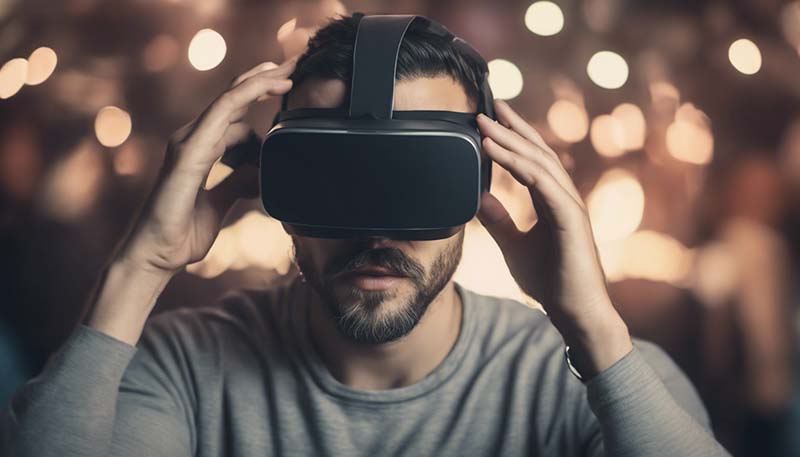The Role of Virtual Reality in Social Inclusion
The Role of Virtual Reality in Social Inclusion
Virtual reality (VR) is a technology that creates a simulated environment that can be experienced through sensory stimuli, such as sights, sounds, and touch. With the rapid advancements in VR technology, it has the potential to revolutionize various industries, including healthcare, education, and entertainment. However, one area where VR can have a significant impact is social inclusion. Social inclusion refers to the process of improving the ability of individuals to participate in society equitably, regardless of their background or circumstances. In this article, we will explore the role of VR in promoting social inclusion and its potential benefits and challenges.
1. Enhancing Accessibility
One of the primary benefits of VR is its ability to enhance accessibility for individuals with disabilities. For instance, individuals with physical disabilities can use VR to explore and experience environments that may not be accessible to them in the real world. This can help them feel a sense of belonging and inclusion in society.
1.1 Virtual Travel
VR can enable individuals to virtually travel to different parts of the world without leaving their homes. This can be particularly beneficial for individuals with mobility impairments or those who are unable to travel due to financial constraints.
Advertisement
1.2 Virtual Rehabilitation
VR can also be used for rehabilitation purposes, helping individuals with physical disabilities to regain their mobility and independence. By simulating real-life scenarios, VR can provide a safe and controlled environment for individuals to practice and improve their motor skills.
2. Promoting Empathy and Understanding
Another way VR can promote social inclusion is by fostering empathy and understanding among individuals from different backgrounds. By immersing users in different perspectives, VR can help them better understand the experiences and challenges faced by others.
2.1 Empathy Training
VR can be used for empathy training, where individuals can experience the world from the perspective of someone else. For example, VR can simulate the experiences of individuals with autism, helping others to better understand their challenges and needs.
2.2 Cultural Experiences
VR can also provide immersive cultural experiences, allowing individuals to explore different cultures and traditions. This can help promote cultural understanding and appreciation, reducing prejudice and discrimination.
3. Supporting Education and Training
VR can also play a crucial role in promoting social inclusion through education and training. By providing immersive and interactive learning experiences, VR can help individuals develop new skills and competencies, enhancing their employability and social participation.
3.1 Virtual Classrooms
VR can enable remote access to educational institutions, allowing individuals from different parts of the world to participate in virtual classrooms. This can help overcome geographical barriers and provide equal opportunities for learning and skill development.
3.2 Skills Training
VR can also be used for skills training, where individuals can practice and develop their skills in a safe and controlled environment. This can be particularly beneficial for individuals with limited access to traditional training programs or those who may be hesitant to participate in face-to-face training sessions.
4. Challenges and Limitations
While VR has the potential to promote social inclusion, there are also several challenges and limitations that need to be addressed:

4.1 Cost and Accessibility
One of the primary challenges is the cost and accessibility of VR technology. High-quality VR systems can be expensive, limiting their availability to individuals with financial constraints.
4.2 Digital Divide
Another challenge is the digital divide, where individuals with limited access to technology may be excluded from the benefits of VR. Efforts need to be made to bridge this gap and ensure that VR technology is accessible to all.
4.3 Privacy and Security Concerns
VR technology also raises privacy and security concerns, as users' personal information and experiences may be vulnerable to data breaches and misuse. It is crucial to establish robust data protection measures to ensure users' privacy and security.
5. Conclusion
In conclusion, virtual reality has the potential to play a significant role in promoting social inclusion by enhancing accessibility, promoting empathy and understanding, and supporting education and training. However, it is essential to address the challenges and limitations associated with VR technology to ensure that its benefits are accessible to all individuals, regardless of their background or circumstances.
Comment